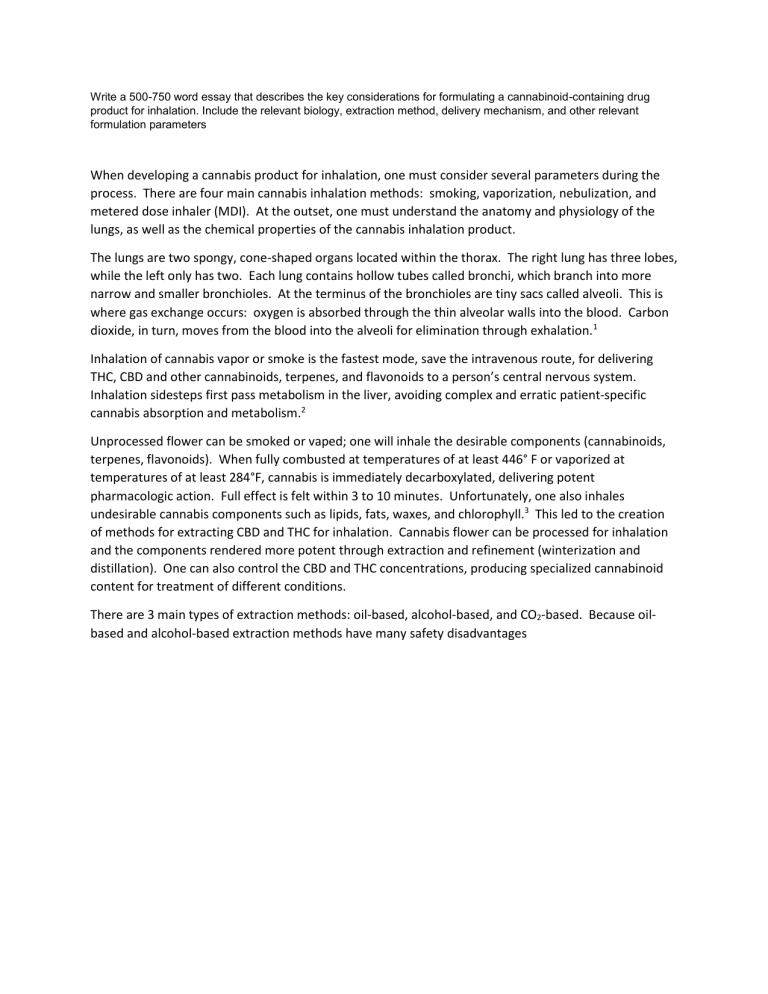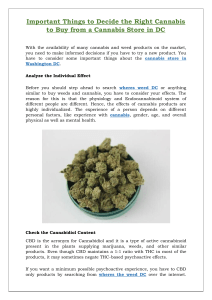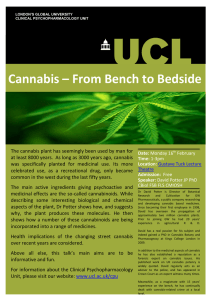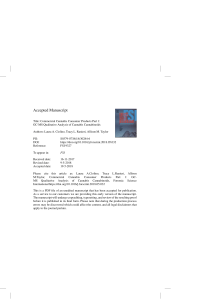
Write a 500-750 word essay that describes the key considerations for formulating a cannabinoid-containing drug product for inhalation. Include the relevant biology, extraction method, delivery mechanism, and other relevant formulation parameters When developing a cannabis product for inhalation, one must consider several parameters during the process. There are four main cannabis inhalation methods: smoking, vaporization, nebulization, and metered dose inhaler (MDI). At the outset, one must understand the anatomy and physiology of the lungs, as well as the chemical properties of the cannabis inhalation product. The lungs are two spongy, cone-shaped organs located within the thorax. The right lung has three lobes, while the left only has two. Each lung contains hollow tubes called bronchi, which branch into more narrow and smaller bronchioles. At the terminus of the bronchioles are tiny sacs called alveoli. This is where gas exchange occurs: oxygen is absorbed through the thin alveolar walls into the blood. Carbon dioxide, in turn, moves from the blood into the alveoli for elimination through exhalation.1 Inhalation of cannabis vapor or smoke is the fastest mode, save the intravenous route, for delivering THC, CBD and other cannabinoids, terpenes, and flavonoids to a person’s central nervous system. Inhalation sidesteps first pass metabolism in the liver, avoiding complex and erratic patient-specific cannabis absorption and metabolism.2 Unprocessed flower can be smoked or vaped; one will inhale the desirable components (cannabinoids, terpenes, flavonoids). When fully combusted at temperatures of at least 446° F or vaporized at temperatures of at least 284°F, cannabis is immediately decarboxylated, delivering potent pharmacologic action. Full effect is felt within 3 to 10 minutes. Unfortunately, one also inhales undesirable cannabis components such as lipids, fats, waxes, and chlorophyll.3 This led to the creation of methods for extracting CBD and THC for inhalation. Cannabis flower can be processed for inhalation and the components rendered more potent through extraction and refinement (winterization and distillation). One can also control the CBD and THC concentrations, producing specialized cannabinoid content for treatment of different conditions. There are 3 main types of extraction methods: oil-based, alcohol-based, and CO2-based. Because oilbased and alcohol-based extraction methods have many safety disadvantages References: 1 My a and p textbook. 2 That slideshow linky. 3 lecture material (Lecture 3)





